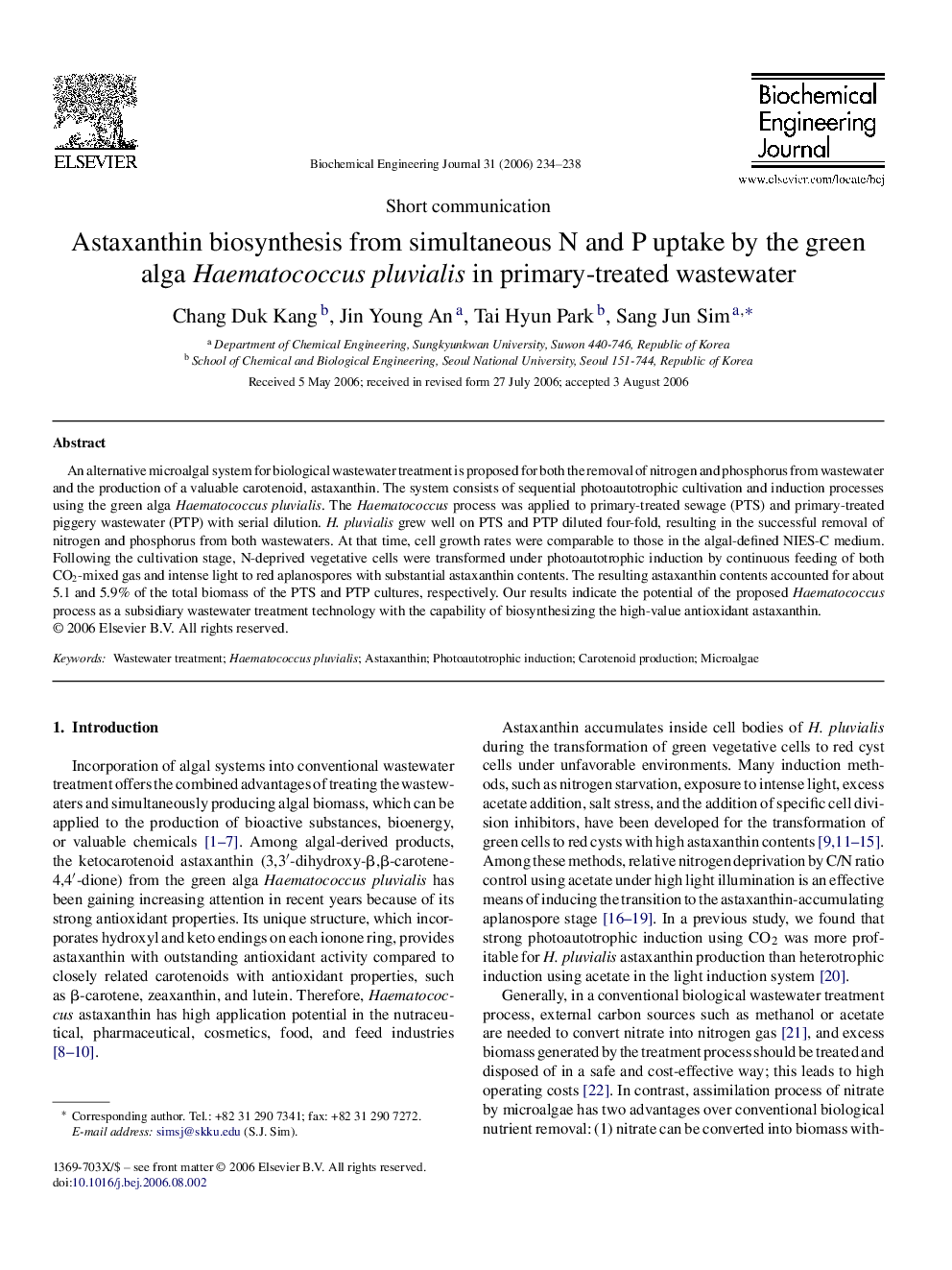| Article ID | Journal | Published Year | Pages | File Type |
|---|---|---|---|---|
| 4822 | Biochemical Engineering Journal | 2006 | 5 Pages |
An alternative microalgal system for biological wastewater treatment is proposed for both the removal of nitrogen and phosphorus from wastewater and the production of a valuable carotenoid, astaxanthin. The system consists of sequential photoautotrophic cultivation and induction processes using the green alga Haematococcus pluvialis. The Haematococcus process was applied to primary-treated sewage (PTS) and primary-treated piggery wastewater (PTP) with serial dilution. H. pluvialis grew well on PTS and PTP diluted four-fold, resulting in the successful removal of nitrogen and phosphorus from both wastewaters. At that time, cell growth rates were comparable to those in the algal-defined NIES-C medium. Following the cultivation stage, N-deprived vegetative cells were transformed under photoautotrophic induction by continuous feeding of both CO2-mixed gas and intense light to red aplanospores with substantial astaxanthin contents. The resulting astaxanthin contents accounted for about 5.1 and 5.9% of the total biomass of the PTS and PTP cultures, respectively. Our results indicate the potential of the proposed Haematococcus process as a subsidiary wastewater treatment technology with the capability of biosynthesizing the high-value antioxidant astaxanthin.
